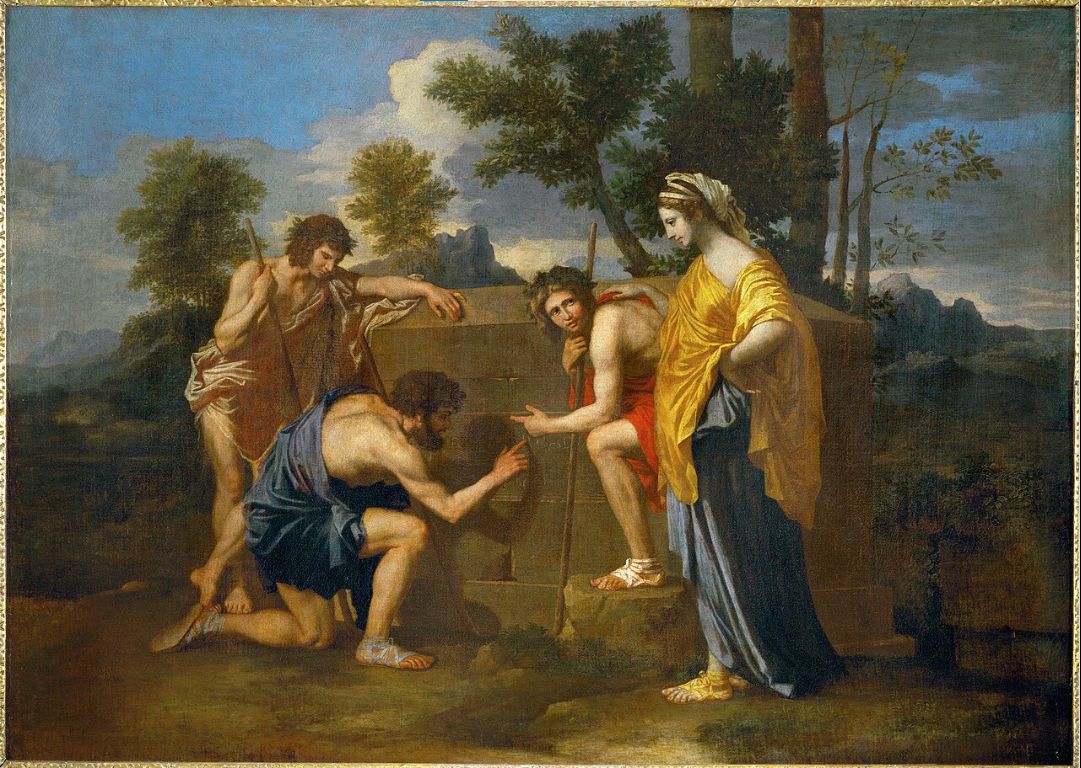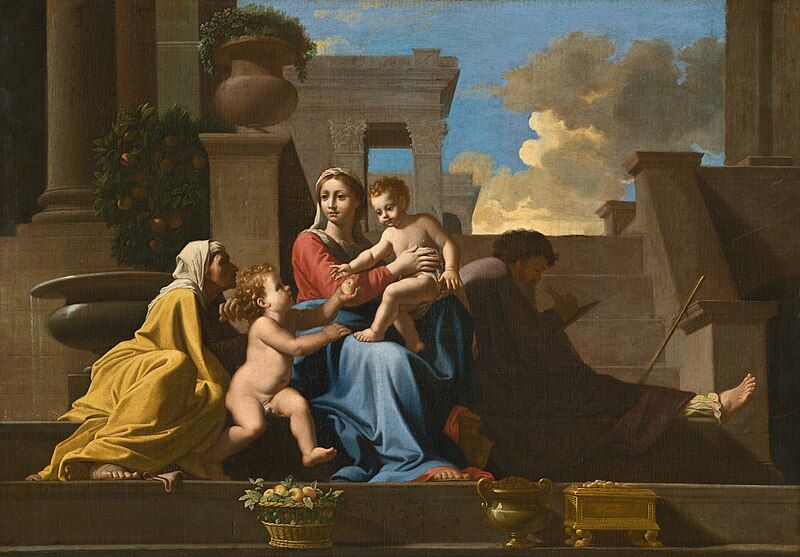Nicolas Poussin (1594–1665) arrived in Rome in 1624. This ancient and art-filled city became a significant turning point in his artistic career. Poussin was born in Les Andelys, Normandy, France. His father was a soldier, and his mother was a descendant of local nobility. Poussin received a good education in his youth, particularly excelling in Latin literature, which earned him high praise among Roman intellectuals. However, as an artist, his development was relatively slow.

In Rome, he worked in the studio of Domenichino (1581–1641), who had assisted Annibale Carracci in creating the Farnese Gallery. Despite this valuable learning experience, Poussin's artistic achievements did not come easily.
In 1628, Poussin received an important commission to create a large altarpiece for St. Peter's Basilica. However, the work did not satisfy the commissioners, and he subsequently did not work on any other churches or public buildings in Rome. Instead, he turned his attention to smaller works, creating paintings for private collectors, especially those who shared his interests.
Poussin's artistic style was very different from contemporary Roman painting. He sought inspiration from the masters of the Venetian school, which is evident in his works from around 1630. His paintings featured robust, athlete-like figures, rich colors, golden light, and a free and fluid handling of paint, all of which showcased the influence of Titian. Several of Titian's works were displayed in Rome at the time, significantly impacting Poussin. However, the sensuous vitality of Titian's paintings was transformed in Poussin's work into an autumnal and elegiac pastoral poetry. For example, in his famous painting "Et in Arcadia Ego," shepherds point to the inscription on a tomb: "Et in Arcadia"—I, too, am in Arcadia, representing death. Although this inscription does not appear in classical texts and may have been created by Poussin himself, it perfectly expresses his melancholic reflection on the fleeting nature of joy.

Poussin's artistic creations were not merely about mimicking and inheriting painting techniques but also about his profound understanding and innovation of classical spirit. In his painting "The Holy Family on the Steps," Poussin combined the forms of Raphael and Michelangelo, expressing the image of the Madonna as a stairway to heaven in a calm and solemn manner. Every detail in the painting has symbolic significance, such as the meticulously depicted apples in the basket, hinting at the forbidden fruit and fallen humanity redeemed by Christ.

Poussin's distinctive approach extended beyond his technical prowess. His artistic philosophy was also noteworthy. He once mentioned that a painting should be framed so that the viewer's gaze remains focused on the image, undistracted by anything outside the frame. His paintings demanded and deserved such attention, akin to poetry that requires careful study to be fully appreciated. Bernini, when commenting on Poussin, pointed to his forehead and said, "He is a painter who paints with his mind." Poussin's works were not just visual pleasures but also intellectual contemplations and insights.